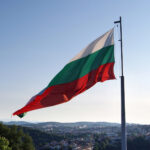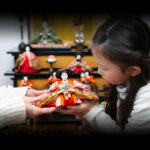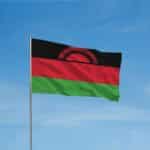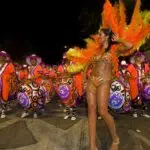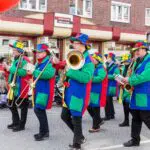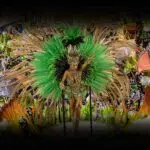The Argentina Carnival is celebrated on the Monday before Ash Wednesday and takes place on February 20 this year. It is the perfect time to let loose and party. A carnival is an ideal excuse to throw a big party with all the trimmings and thrills. It only takes a flashback to childhood to recall images of candy floss, amusing sideshows, and rides that give you butterflies. And if you haven’t yet experienced the carnival’s allure, now is the time.
History of Argentina Carnival
This holiday commemorates the annual festival in Argentina that takes place in the days preceding Ash Wednesday. The festival marks the beginning of Lent, and Monday (Lunes de Carnival) and Tuesday (Martes de Carnival) are national holidays in Argentina. Carnival traditions in Argentina are like those of the Brazilian Carnival, which were brought to the new world by European settlers in the 1600s.The Spanish tradition was imported into Argentina, whereas the Portuguese introduced it to Brazil. Carnival customs have been strongly influenced by African traditions in both cases. Before the rise of the South American carnival tradition, Italy was the carnival’s birthplace, with the Venice carnival being the largest in the world.The most extravagant carnival celebrations take place in Gualeguaychu, where parades take place every weekend from January to March. Carnival celebrations in Argentina’s north continue to be more popular than in the south, which may be due to the Christian tradition of Carnival coinciding with an older, local harvest festival. In parts of Argentina, the tincunaco ceremony is a Carnival tradition.The carnival began as a celebration of Spanish heritage and the Candombe dance, which was performed by black slaves. Initially practiced privately in individual homes, they gradually spread to neighborhood clubs and then evolved into more organized public street celebrations complete with masks, colorful costumes, elaborated floats, and parades over the centuries.Carnival celebrations reached new heights of popularity in the early 1900s. Carnival days were declared public holidays in 1956, but the military dictatorship abolished them 20 years later. Many carnival customs in Argentina have been disrupted or lost as a result of this change. Even though they were not as widely celebrated and observed as they once were, a few cities maintained the traditions. In the case of Buenos Aires, it has been replaced with a different form known as murgas, in an attempt to keep the carnival spirit alive.
Argentina Carnival timeline
The carnival's in Argentina begin during the Spanish colonial period.
Carnival celebrations reach new heights of popularity.
Carnival days are declared public holidays; however, the military dictatorship removes them as holidays 20 years later.
The Argentine government reinstates the carnival holidays, creating a four-day long weekend across the country.
Argentina Carnival FAQs
What is Argentina famous for?
Argentina is number eight on the list of the world’s largest countries. It is famous for its wines, gauchos, tango, and the Iguazu Falls.
What are some of Argentina's festivals?
Tango Buenos Aires Festival, Oktoberfest Festival of Beer, Fiesta Nacional de la Vendimia, Cosquín Folk Festival, and Carnival are some of Argentina’s top festivals celebrated in grand style.
In Argentina, what is considered impolite?
The majority of Argentines eat with a knife in their right hand and a fork in their left. It is considered rude to use a toothpick in public. It is also considered impolite to blow one’s nose or clear one’s throat at the table. Eating on public transportation is considered impolite.
Argentina Carnival Activities
-
Have fun at the food festival
Nothing beats stuffing your face with delicious food. The Argentina Carnival features a wide selection of traditional Argentine dishes such as asado and parrillas, choripán, chimichurri, and milanesa.
-
Throw a block party
Get your friends together and throw your own cool street party. Carnivals are all about wild partying before the fasting period of Lent begins. Have fun with your party ideas and be creative.
-
Spread the joy
Make it a family affair and bring everyone, young and old, along. Show everyone how much fun you had, and perhaps the next time you plan to visit the Argentina Carnival, you'll have a much larger group with you.
5 Amazing Facts About Argentina
-
Kings of beef
Beef is an essential component of Argentine cuisine and is served all over the world.
-
Buenos Aires translates as “good airs”
Argentina's capital was named after the top of a hill, which was the only place where you could avoid the stench of swamps.
-
Gauchos are the country's symbol
Cowboys, or ‘gauchos,’ are known for their bravery and their distinctive dress, which they still wear.
-
It is the birthplace of the Tango
The dance originated in the 1800s in the capital of Buenos Aires and was performed in poor neighborhoods.
-
Pato is the national sport
Pato, the Argentine national sport, is played on horseback and is a cross between polo and basketball.
Why We Love Argentina Carnival
-
It ushers in the Lent period
The carnival is the last chance to participate in any type of fun activity because it concludes on Ash Wednesday, when Lent begins. During this time, most Catholics and Christians fast and refrain from any type of party or fun.
-
It teaches us about culture and history
This holiday is a lavish display of Argentina's rich culture and joy for life. The influence of African cultures can also be seen in the carnival’s themes.
-
It improves social integration
Argentinians and tourists from all over the world gather in one place to celebrate Argentina Carnival. A truly global community comes together to celebrate the beauty of life.
Argentina Carnival dates
| Year | Date | Day |
|---|---|---|
| 2022 | February 28 | Monday |
| 2023 | February 20 | Monday |
| 2024 | February 12 | Monday |
| 2025 | March 3 | Monday |
| 2026 | February 16 | Monday |









